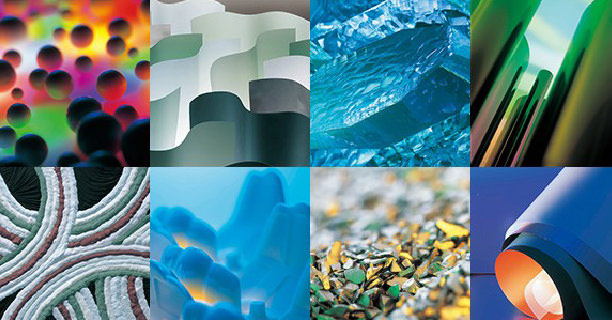Ultra-High-Performance SuperCapacitors
Turn Team Spirit into Strength to
Create the Mobility of Tomorrow


SuperCapacitors Support Storage Batteries to Make the Running of EVs Even Cleaner

The switch to EVs is being actively worked on in many countries to reduce CO2 emissions and solve energy problems. In Europe, an agreement has been reached to effectively ban sales of new gasoline and diesel vehicles for passenger use by 2035. In Japan, an important measure set out in the Ministry of Economy, Trade and Industry’s Green Growth Strategy*1 aims to make EVs account for 100% of new vehicle sales by 2035.
In line with the mood of the times, going forward, the demand for EVs is expected to increase. Storage batteries are fundamental to EVs, and enhancing the performance of those batteries is essential for the growth of the automotive industry. At present, there is intense competition to develop storage batteries at countless facilities worldwide. Kyocera AVX Components Corporation (KAVX), which is based in the United States, is central to Kyocera and is helping lead our development activities for EV-related technologies. In particular, with the aim of improving storage battery performance, KAVX is working on the development of SuperCapacitors as in-vehicle components.

SuperCapacitors (Electric double-layer capacitors)
Electric double-layer capacitors have a very high capacitance value compared to other capacitors, such as MLCCs (ceramic capacitors), tantalum capacitors, and aluminum electrolytic capacitors. These capacitors can be used as backups for various types of batteries.
As Well as Improving Energy Efficiency, SuperCapacitors Also Realize Longer Life for Storage Batteries
-
 Senior FellowKYOCERA AVX
Senior FellowKYOCERA AVX -
 Field Applications EngineerKYOCERA AVX
Field Applications EngineerKYOCERA AVX
-

You have been participating in various projects as an engineer. Do you get the impression that research and development in the field of EVs and charging have recently become more active?
-

Yes, I do. Most of the development we are working on is related to EVs. In particular, we have recently been concentrating our efforts on the development of SuperCapacitors.
-

SuperCapacitors control energy use in the devices to which they are fitted and return the electric power that is generated by the motor as energy. As such, they are a technology that expands the possibilities of EV driving. I, too, have very high expectations for this field. This is still a new technology, so am I correct in thinking that you have been faced with many difficulties in its development?
-

We mainly have difficulty matching the latest technology with market needs. This is because what is expected of us is the ability to determine what is necessary for the industry and to enhance our company’s products to fit with that. To alter the latest technology to suit the market, the research team charged with technological development must work with the engineering team and establish an environment that enables the smooth exchange of opinions and know-how; I endeavor to act as a bridge between those teams.
-

Devices fitted with storage batteries are not limited to EVs. Our everyday lives are positively overflowing with them. In that sense, are SuperCapacitors a product that can be utilized in sectors besides automotive?
-

Yes, they are. Therefore, while EV is a focal point for our team, we are compiling our portfolio and expecting that we will develop products for a variety of other industries. Improving the performance of storage batteries with SuperCapacitors is also useful when operating robots, and we also believe it will lead to improved performance in the kind of mobile tools that are familiar in our everyday lives, such as smartphones and computers. To engage in development while keeping a close eye on trends in a wide range of industries, I constantly must update my knowledge, which is tough.
-

As well as fostering development in the automotive industry, improving the performance of storage batteries is vital to research that links with more prominent themes, such as conserving the global environment and building a sustainable society. I am also discovering how worthwhile it is to reduce waste by improving energy efficiency, and I aim to make society more sustainable.
-

SuperCapacitors can improve energy efficiency, run storage batteries using smaller amounts of energy, and extend the operating life of batteries, right?
-

Yes, they do. By using SuperCapacitors, in theory, it is predicted that the operating life of storage batteries can be extended by a matter of years. Extending their operating life means that waste will be reduced. From the point of view of environmental conservation, we think this is a feature that should be emphasized.
-

Even if we develop a new technology with high functionality, it must not harm people or the environment.
-

As developers, in addition to that kind of social responsibility, we would like to turn our attention to the selection of raw materials with a focus on sustainable equipment manufacturing. Lithium is essential for the manufacture of storage batteries, and at present, those storage batteries are becoming mainstream. But lithium as a material may become scarce in the future. Another advantage of SuperCapacitors is that they reduce the amount of lithium that is used in storage batteries, so they are also a superior device from a supply point of view.
-

I see. It is also important to consider the issue of sustainable supply after having developed a technology and introduced it to the market. As people who create technologies that will link with the future, it is probably one of our responsibilities to consider that viewpoint.
The Greatest Driving Force in Producing New Technology is Family-Style Teamwork

-

Because you work as an all-rounder who closely monitors various industries, inputting your knowledge and developing ideas for each project must be very difficult.
-

Yes, it is. It is hard work every time we create an application from scratch and gather the information for that process. But every member of the engineering team is cooperative. Previously, when I did not know what to do about something in relation to development in the medical field, my engineering teammates provided me with technical information and support.
-

In development, establishing a good team is more important than anything else. My team holds frequent meetings and brainstorming sessions, and the members always aim to communicate closely, so I feel secure in delegating work to them.
-

Obstacles and hardships are unavoidable when we take on challenges. But we can enjoy that together with our team and share the sense of accomplishment of overcoming obstacles and a communal sense that what we are doing is worthwhile.
-

This team really is like a family, isn’t it? As the leader, I manage the project as a whole, and I sometimes worry about how to advance complex development processes. For example, what is essential and what can be reduced when releasing a particular technology into the market. By prioritizing in that way as we work, we also want to guarantee speed in delivering technology to customers and users.
-

Being able to interact with engineers and researchers on the frontline is a big motivation when advancing development in the EV field.
-

It is. Sometimes I go out for a meal with engineers from leading manufacturing companies to exchange ideas. I am proud to be able to collaborate with the best engineers in the world.
-

We can acquire new expertise from working with first-class engineers; it motivates us to aim higher. All the engineers from Kyocera conducting collaborative research are also highly skilled and have a remarkable ability to develop products.
-

Everybody at Kyocera has a track record of research and development with a wide range of products, so they have interesting viewpoints. Their presence broadens our horizons to develop SuperCapacitors in fields other than EVs.
-

We would very much like to go to Japan to exchange ideas with them in person. In the future, we would like the teams from Japan and the United States to put their efforts into expanding the potential of SuperCapacitors.
Understanding New Challenges and Future Projects
Being Undertaken at Kyocera
Kyocera’s Main Growth Markets
-
 Ever since the company was founded in 1959, Kyocera has engaged in the application and development of advanced ceramic (also known as “fine ceramic”) technology in a wide range of fields, from materials and parts to devices, services, and networks. This site looks at the various technologies shaping the future.
Ever since the company was founded in 1959, Kyocera has engaged in the application and development of advanced ceramic (also known as “fine ceramic”) technology in a wide range of fields, from materials and parts to devices, services, and networks. This site looks at the various technologies shaping the future. -
 Kyocera has been developing market-leading breakthroughs since its very inception. In this website,we present information on Kyocera’s intellectual property and licensing programs that can bring new value to the world.
Kyocera has been developing market-leading breakthroughs since its very inception. In this website,we present information on Kyocera’s intellectual property and licensing programs that can bring new value to the world. -
 Kyocera’s open innovation initiative brings together technologies and ideas from both within and outside the company to create new value and develop new businesses.
Kyocera’s open innovation initiative brings together technologies and ideas from both within and outside the company to create new value and develop new businesses.









